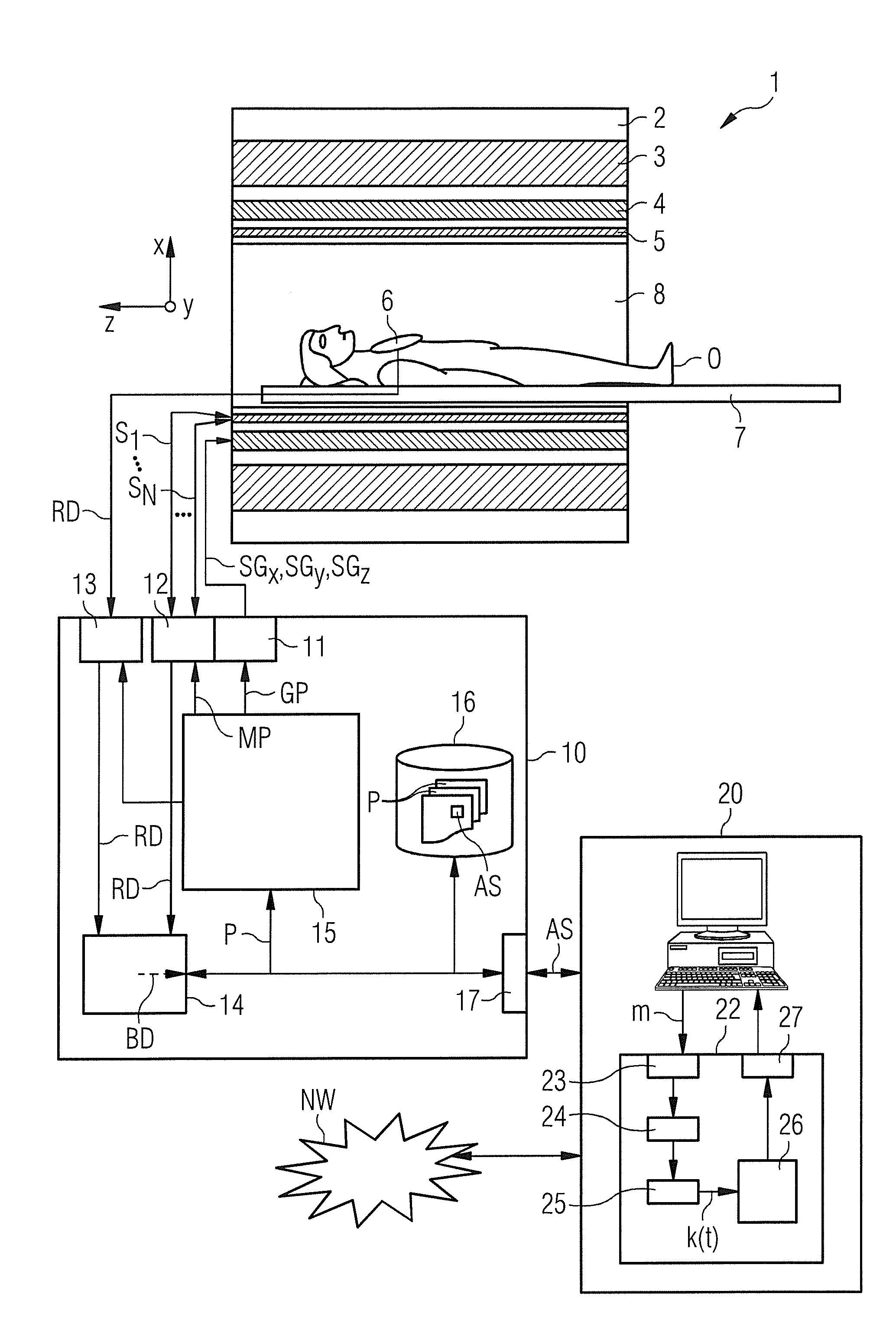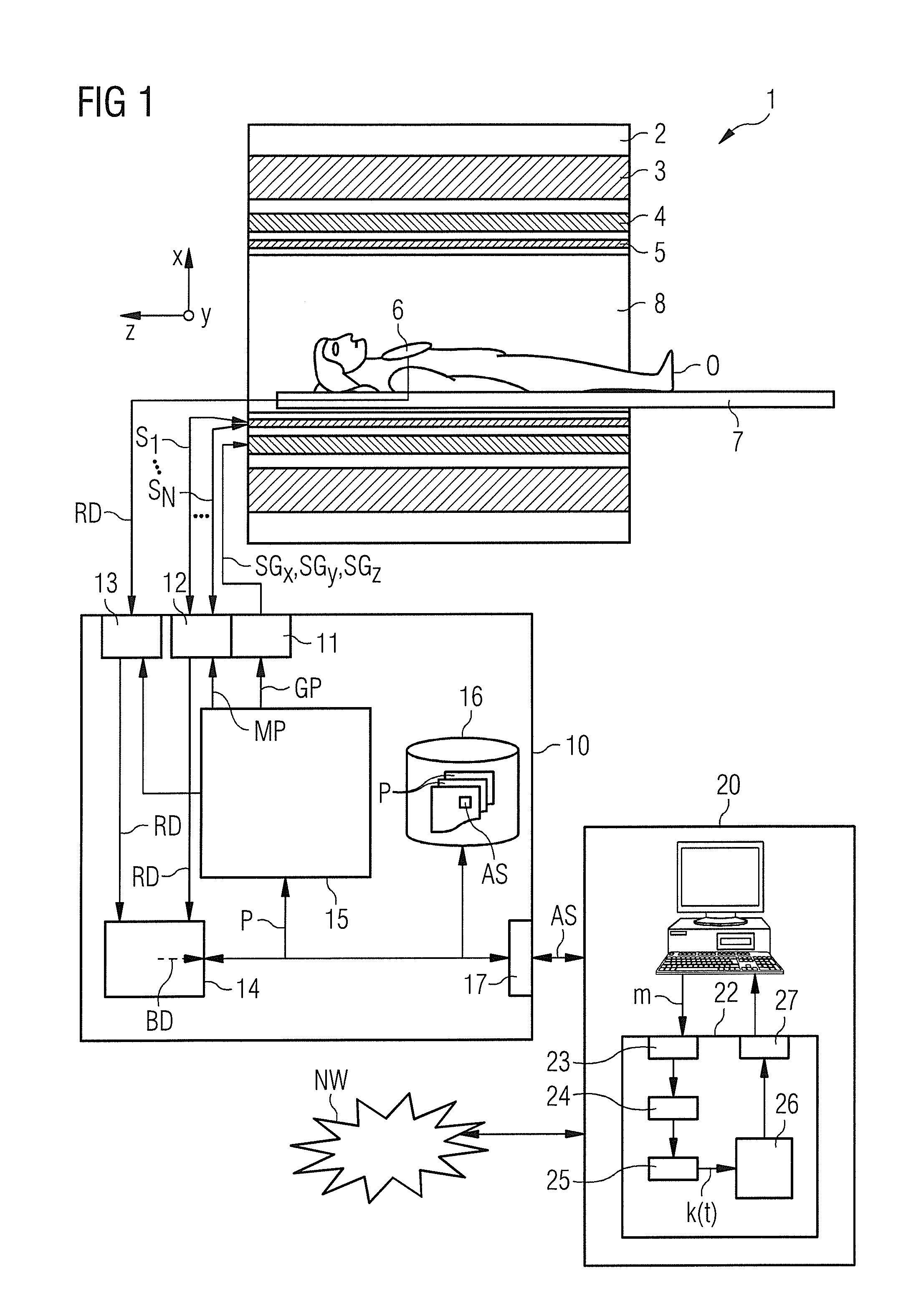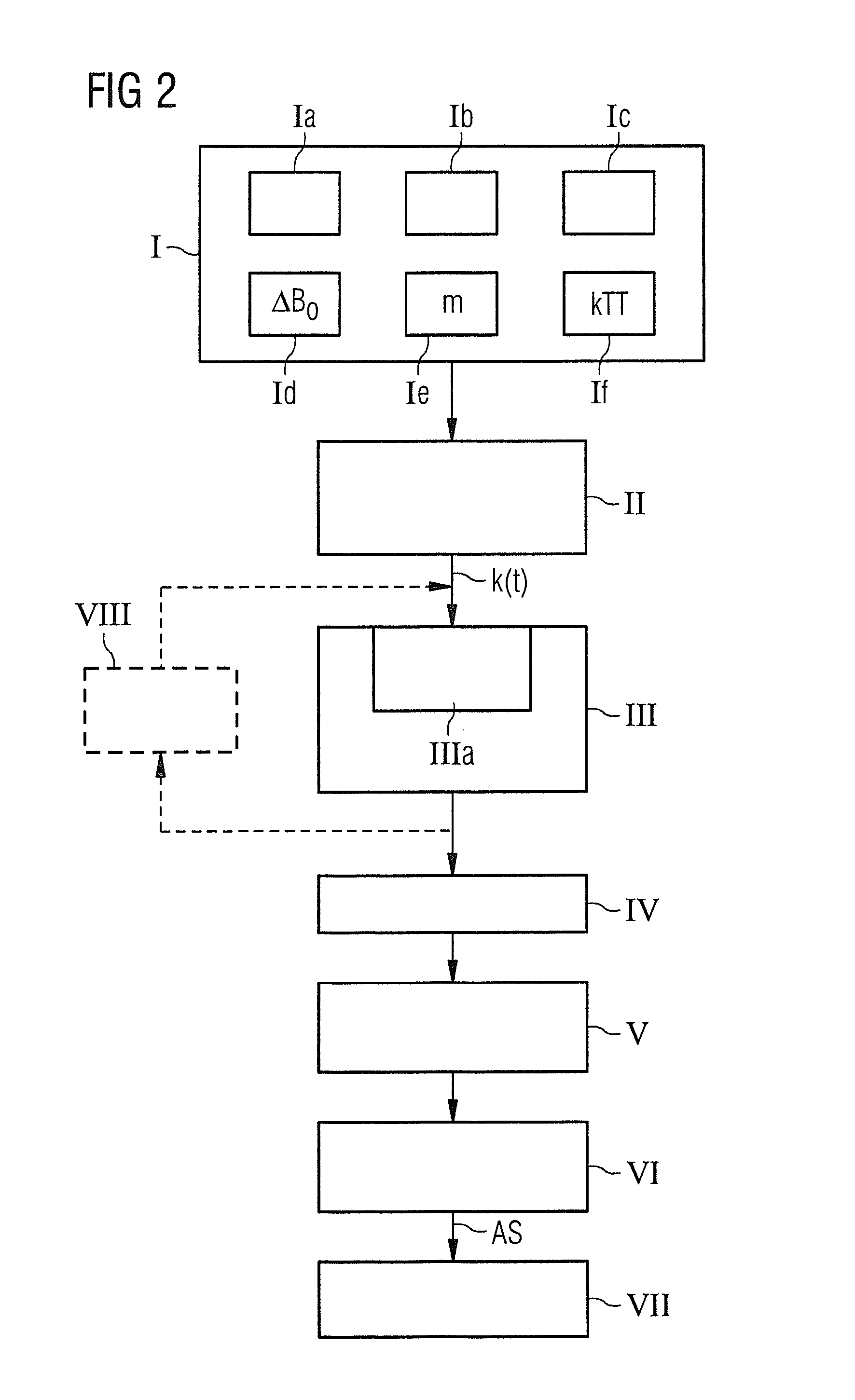Determination of a magnetic resonance system control sequence
a magnetic resonance system and control sequence technology, applied in the direction of magnetic variable regulation, measurement using nmr, instruments, etc., can solve the problems of increased risk, higher risk of artifact formation in images, and one-dimensional, two-dimensional or multi-dimensional k-space trajectories for selective excitation with a higher complexity compared to the typically used trajectories, etc., to achieve fast and optimally robust calculations of optimized k-space trajectories
- Summary
- Abstract
- Description
- Claims
- Application Information
AI Technical Summary
Benefits of technology
Problems solved by technology
Method used
Image
Examples
Embodiment Construction
[0073]A magnetic resonance system 1 according to the invention is shown schematically in FIG. 1. The system 1 includes the actual magnetic resonance scanner 2 with an examination space 8 or patient tunnel that is located in the magnetic resonance scanner 2. A bed 7 can be driven into this patient tunnel 8, such that an examination subject O (patient / test subject) situated thereupon during an examination can be supported at a specific position within the magnetic resonance scanner 2 relative to the magnet system and radio-frequency system arranged therein, or can also be driven between different positions during a measurement.
[0074]Significant components of the magnetic resonance scanner 2 are a basic field magnet 3; a gradient system 4 with magnetic field gradient coils in order to apply arbitrary magnetic field gradients in the x-, y- and z-directions, and a whole-body radio-frequency coil 5. The receipt of magnetic resonance signals induced in the examination subject O can take pl...
PUM
 Login to View More
Login to View More Abstract
Description
Claims
Application Information
 Login to View More
Login to View More - R&D
- Intellectual Property
- Life Sciences
- Materials
- Tech Scout
- Unparalleled Data Quality
- Higher Quality Content
- 60% Fewer Hallucinations
Browse by: Latest US Patents, China's latest patents, Technical Efficacy Thesaurus, Application Domain, Technology Topic, Popular Technical Reports.
© 2025 PatSnap. All rights reserved.Legal|Privacy policy|Modern Slavery Act Transparency Statement|Sitemap|About US| Contact US: help@patsnap.com



